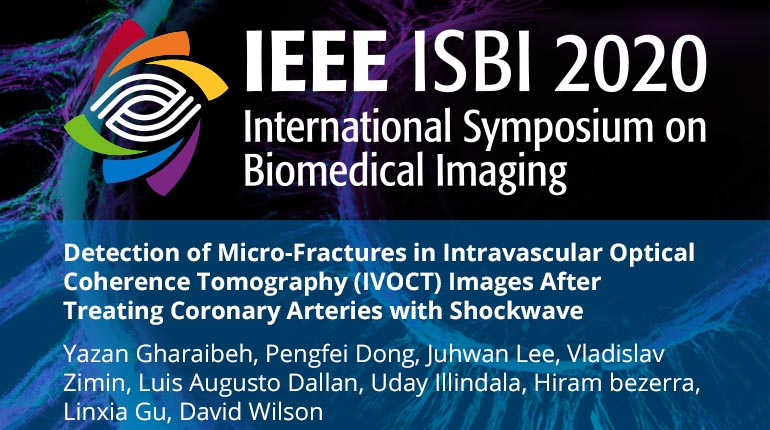
Already purchased this program?
Login to View
This video program is a part of the Premium package:
Detection of Micro-Fractures in Intravascular Optical Coherence Tomography (IVOCT) Images After Treating Coronary Arteries with Shockwave Intravascular Lithotripsy (IVL)
- IEEE MemberUS $11.00
- Society MemberUS $0.00
- IEEE Student MemberUS $11.00
- Non-IEEE MemberUS $15.00
Detection of Micro-Fractures in Intravascular Optical Coherence Tomography (IVOCT) Images After Treating Coronary Arteries with Shockwave Intravascular Lithotripsy (IVL)
Intravascular lithotripsy (IVL) is a plaque modification technique that delivers pressure waves to pre-treat heavily calcified vascular calcifications to aid successful stent deployment. IVL causes micro-fractures that can develop into macro-fractures which enable successful vessel expansion. Intravascular optical coherence tomography (IVOCT) has the penetration, resolution, and contrast to characterize coronary calcifications. We detected the presence of micro-fractures by comparing textures before and after IVL treatment (p = 0.0039). In addition, we used finite element model (FEM) to success-fully predict the location of macro-fracture. Results suggest that we can use our methods to understand and possibly clinically monitor IVL treatment.
Intravascular lithotripsy (IVL) is a plaque modification technique that delivers pressure waves to pre-treat heavily calcified vascular calcifications to aid successful stent deployment. IVL causes micro-fractures that can develop into macro-fractures which enable successful vessel expansion. Intravascular optical coherence tomography (IVOCT) has the penetration, resolution, and contrast to characterize coronary calcifications. We detected the presence of micro-fractures by comparing textures before and after IVL treatment (p = 0.0039). In addition, we used finite element model (FEM) to success-fully predict the location of macro-fracture. Results suggest that we can use our methods to understand and possibly clinically monitor IVL treatment.
 Cart
Cart Create Account
Create Account Sign In
Sign In





